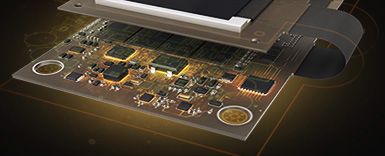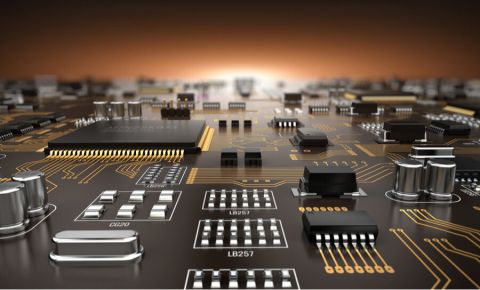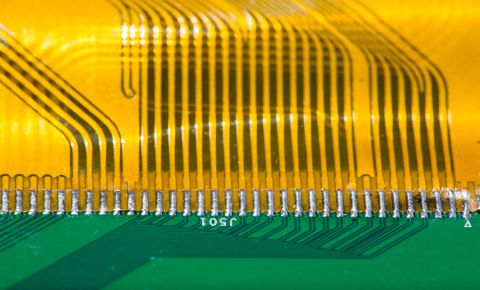Solving Component Library Errors During PCB Layout Reuse
With the right PCB design package, you can even reuse layouts for these old cell phones
I recently bought a new computer after data on my old hard drive started to “magically” become corrupted. Once I broke into my new computer and transferred my data over, I became worried I wouldn’t be able to reuse my old data. When it comes to simpler things like text files or images, you’ll have no problems; you can immediately reopen and reuse these files. With your PCB design data, you may naturally want to reuse an old layout in a new project. In some cases, you may be sharing designs with someone on the other side of the planet, and you might want to make sure all the data in your project is accessible.
This takes some care in ensuring your prior design data is available in your new version of Altium Designer. When you work with the library management features in Altium Designer, you’ll be able to easily import your old design data into a new project and start using it in new designs. Let’s take a look at some ways you can reuse your old data in Altium Designer.
Reusing an Old Layout
There are a number of ways to reuse your old PCB layouts in a new project. Because any schematic and PCB layout depends on component data from a library, you’ll need to ensure that your design data points to the right location for this data. As an example, we’ll look at a schematic and layout that were created in Altium Designer 19. The layout and schematic contain a 100 pF capacitor from the Miscellaneous Devices library (this is built-in to Altium Designer), and an ATmega328p microcontroller. The integrated library for the microcontroller was created from component data that was downloaded from the internet.
The schematic and PCB layout were created in their own project, and the schematic and layout files were saved to my local hard drive. To simulate transferring these files to another designer, I created a new project, uninstalled the the ATmega328p microcontroller library from my Components panel in Altium Designer, and deleted the integrated library file from my computer.
If you simply open schematic and PCB layout files in a new project, you’ll be able to see footprints and schematic symbols, but you won’t be able to access any data for the component. When you investigate the component properties (see the Properties panel in the PCB Editor), you’ll see the following error:
Component data error during PCB layout reuse
If you look on the right hand side of the image, you’ll see that the “Source” drop-down menu is greyed out. If you click on the ellipsis, you’ll see the message box above appear. If you are migrating a layout and schematic from another ECAD program, you may have the same problem if your library does not contain the relevant component data. This creates a problem when you try to run simulations or compile a bill of materials for your board. Altium Designer will try to guess the relevant model for your component, which may not always be accurate.
If your design is missing data for a small number of components, then you can get away with just installing the missing libraries. Note that the entry in the above image points to a specific file listed in the Library field (see the AD19->Library directory on your hard drive). You would need to make sure the library name matches the name referenced in the Properties panel.
To do this, you can copy the integrated component libraries to the location on your computer where you store your component data. Open the Components panel and click on entry shown in the image below. This will open your list of available libraries. You can then install the missing libraries manually from this window.
Component data error during PCB layout reuse
Altium Designer will update quickly, and you’ll find that the error in the earlier image no longer occurs. This is one way to resolve missing component data errors when reusing an old PCB layout. However, if you know you’ll need to share design data with a collaborator, you can package all the data you need in an integrated library, and you would share the integrated library and schematic/layout data.
Using an Integrated Library from Your Old Project
In order to get around this problem, you can create an integrated library from your old data. This library will contain the important data required to support your schematic and layout documents when you reuse an old PCB layout.
When you are sharing design data, you can simply share the integrated library with your collaborator. Alternatively, you can set this library aside and use the data at a later date. When you’re ready to access the relevant component data, just drag the library into Altium Designer and click Install Library. You can also click Extract Sources to access your PcbLib and SchLib data.
Installing and extracting data from an integrated library
Now when you open your old .PcbDoc file in Altium Designer, you can go to the properties panel for any of your components and reassign the data to the integrated library you created for your project. This will force the layout to reference the integrated library file specifically for your old project, rather than pointing to a library that does not exist within your file structure.
Installing and extracting data from an integrated library
Expediting Design Reuse with Snippets
The Snippets feature in Altium Designer is an excellent way to take only a portion of an old layout and reuse it in a new device. In this process, you can select a portion of a schematic and its associated portion in a layout, and you can create a block that can be easily placed within a new project. This follows a different process than what has been outlined above, but it keeps you from constantly reinventing the wheel when creating new designs.
PCB layout reuse is much easier when your PCB design software includes a set of comprehensive library and data management features. Altium Designer is the only platform that gives you total control over your data and provides tools that enable easy sharing of design data with collaborators. You’ll be able to share your designs with others using the integrated library features built into Altium Designer.
Download a free trial of Altium Designer to see how its powerful data management tools can help you. You’ll have access to the best design features the industry demands in a single program. Talk to an Altium expert today to learn more.












 Back
Back